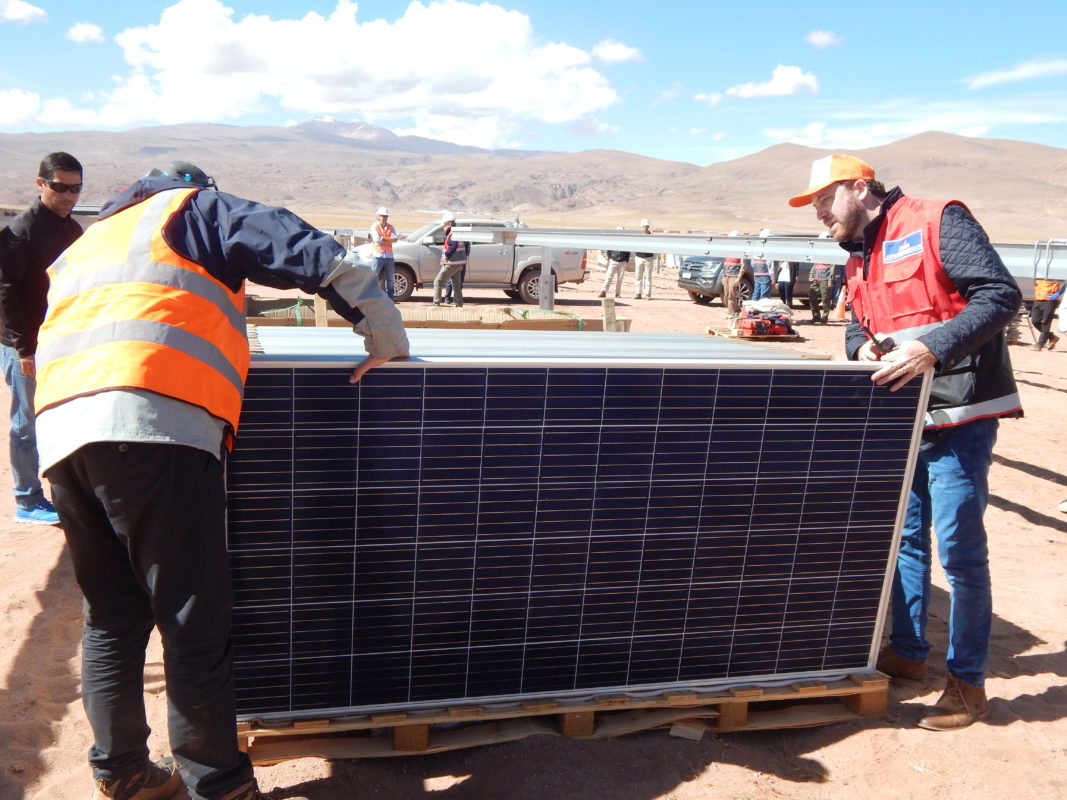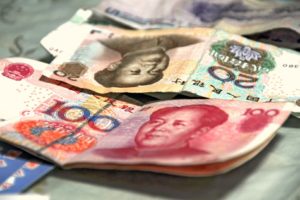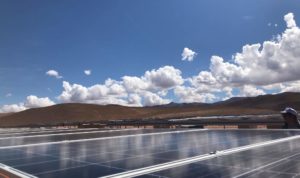Plagued by conflicts over water use and labour standards, Shougang’s 1992 acquisition of an iron ore mine in Peru’s Marcona district – the first major Chinese investment in the country – landed it a reputation as an opaque, uncaring natural resource hunter.
Today with its mushrooming presence in Latin America, China is still linked to poor environmental performance on one hand, and to renewable energy and international climate commitments on the other.
The two roles are hard to reconcile.
Rhetoric versus reality
Top-level rhetoric on sustainability doesn’t match the realities on the ground, according to Paulina Garzón, director of the China-Latin America Sustainable Investment Initiative.
“We hear about the Paris Agreement, about the flourishing of the solar industry and electric busses, but they still haven’t really taken on the importance of environmental issues in the global arena,” she said.
Garzón said many problems at the US$2.5 billion Coca-codo Sinclair hydroelectric project in her native Ecuador result from using decades-old hydrological studies of the Coca river. Its behaviour, she said, has since changed drastically.
13
workers died at the Coca-codo Sinclair hydro plant in a 2015 accident
Constructed by Sinohydro and 85% financed by the Export-Import Bank of China (Exim), both state-owned, Coca-codo Sinclair became operational in 2016 after numerous delays. In December, the New York Times reported that it is cracking up. Three years previously, a pressure well collapsed, killing 13.
With China-backed projects hampered by poor environmental risk management throughout Latin America, companies have learned lessons “painfully”, according to Ren Peng of the Beijing-based Global Environmental Institute.
“It was a lack of awareness in the early stage of going abroad, but now there’s more know-how,” he told Diálogo Chino.
He added that Chinese companies are sensitive to reputational and economic costs, as any company would be irrespective of their nationality. Though he said companies’ “language” is not yet aligned with international commitments on sustainability.
Kevin Gallagher, professor of global development policy at Boston University said that deferring to host countries’ laws on environmental management has proven costly for Chinese companies:
“China is learning – the hard way – that it needs to have its own set of enforceable social and environmental risk management systems for its financing in Latin America.”
Denisse Linares, a researcher at Peruvian NGO Environmental Law and Natural Resources, said her government has eased criteria for environmental impact assessments in order to attract foreign investment.
Trade agreements inked with China in 1988 and 2016 sorely lack the environmental safeguards contained in equivalent deals with the European Union, she said.
“In 30 years, we haven’t seen an evolution for the better.”
Guidelines, not laws
The Chinese government has introduced a series of guidelines to limit the impacts of companies’ projects overseas.
The 2012 Green Credit Directive orders Chinese banks to adhere to international socio-environmental standards. Commitments to stimulate green finance and a new policy on environmental risk management overseas followed in 2016 and 2017, respectively.
None are legally binding.
According to Zhang Jingjing, an environmental lawyer, they are ineffective: “Have you ever seen any bank get administrative penalties because it didn’t follow those guidelines?”
Zhang said that despite good public interest laws in China, no cases have yet addressed outbound investment as they don’t have the jurisdiction.
Chinese companies have been encouraged to ‘go out’, and Chinese lawyers and NGOs, we also need to go out
Katharine Lu, senior sustainable finance coordinator at Friends of the Earth US, agreed that implementation is a longstanding problem but said the policies at least show China’s acknowledgement of its overseas impact.
“If you look at any other country, the US or European countries, there is no equivalent policy, let alone a whole policy suite and framework,” she said.
A key element for Lu in upholding environmental policies is engaging those who monitor the impacts of projects.
Western lenders developed environmental and social policies in response to civil society intervention. Many safeguards and accountability mechanisms were born out of project crises happening on the ground. Chinese banks are learning that they too have to engage.
Zhang said: “Chinese companies have been encouraged to ‘go out’, and Chinese lawyers and NGOs, we also need to go out.”
The positives
A recent study by the International Union for the Conservation of Nature (IUCN) and the Leave it in the Ground Initiative (LINGO), highlighted positive examples of responsible Chinese corporate practice.
It cites Sinohydro’s withdrawal from the controversial Aguas Zarca dam in Honduras as local indigenous Lenca resisted construction on a river they consider sacred. Sinohydro pulled out prior to Dutch and Finnish investors.
“Even if it’s one in one hundred, we still think the move in that direction is helpful,” said report co-author Kjell Khüne of LINGO.
Liliana Jaregui of IUCN said positive examples can be useful for Latin American NGOs, whose “confrontational” strategy isn’t always effective.
Huang Wei, a former climate and energy campaigner at Greenpeace East Asia, interviewed top executives from Chinese banks and companies on how to put the government’s guidelines into practice.
Green groups’ thinking on environmental risk, which encompasses such societal ills as pollution, differs to practitioners, who consider multiple risks and pay attention to hard regulatory benchmarks and profit margins, Huang told Diálogo Chino.
“It’s just very practical. They don’t consider it from a moral point of view.”
Energy investment
China’s ‘Go Global’ policy encouraging investors to seek opportunities overseas, which President Xi Jinping repackaged as the Belt and Road Initiative (BRI) in 2013, has largely meant securing food and energy resources.
As growth has slowed domestically, it has increasingly become a conduit for its industrial overcapacity.
Huang said many BRI investments have been channeled towards coal because of limited opportunities at home. Coal projects in China with a combined capacity of 100GW are to be shelved as part of plans to curb carbon emissions, the government announced in 2016.
It’s not a zero sum game. More renewable energy doesn’t bring less coal
Chinese banks back thermoelectric power in the Brazilian state of Rio Grande do Sul. Beyond this, Latin American energy investments focus on oil and hydropower.
Total Latin American energy investment by Exim and China Development Bank, state-owned banks charged with supporting China’s development goals, has hit US$97 billion since 2005, according to latest figures from the Inter-American Dialogue and Boston University’s China-Latin America Finance Database.
These banks have also directed US$1.3 billion to solar projects.
Rather than evidence of a transition away from fossil fuels, this is evidence of Chinese companies diversifying their overseas portfolios, Huang said.
“It’s not a zero sum game. More renewable energy doesn’t bring less coal.”
There have been also been solar curtailments in China, she added.
300MW
the installed capacity of the China-backed Cauchari solar plant in Argentina
The China-backed 300-megawatt Cauchari solar plant in Jujuy province, northern Argentina, will be Latin America’s largest when it becomes operational, slated for May.
Renewable energy auction RenovAr tendered the project, which will use 1.2 million Chinese-made solar panels and could enable a 325,000 tonne annual reduction in carbon emissions.
Ren said that China suffered from worsening air pollution since opening up to foreign investors in the1980s but that Chinese foreign investment could help partners avoid the same problems.
“We may want to see a different path for economic development for other developing countries,” he said.
For Garzón, projects like Cauchari demonstrate the potential for China and Latin America to cooperate on sustainable projects:
“It’s a step forward that could open a door of hope in the relationship.”
This is a version of an article commissioned by Americas Quarterly for their latest issue China-Latin America 2.0, which is out now









